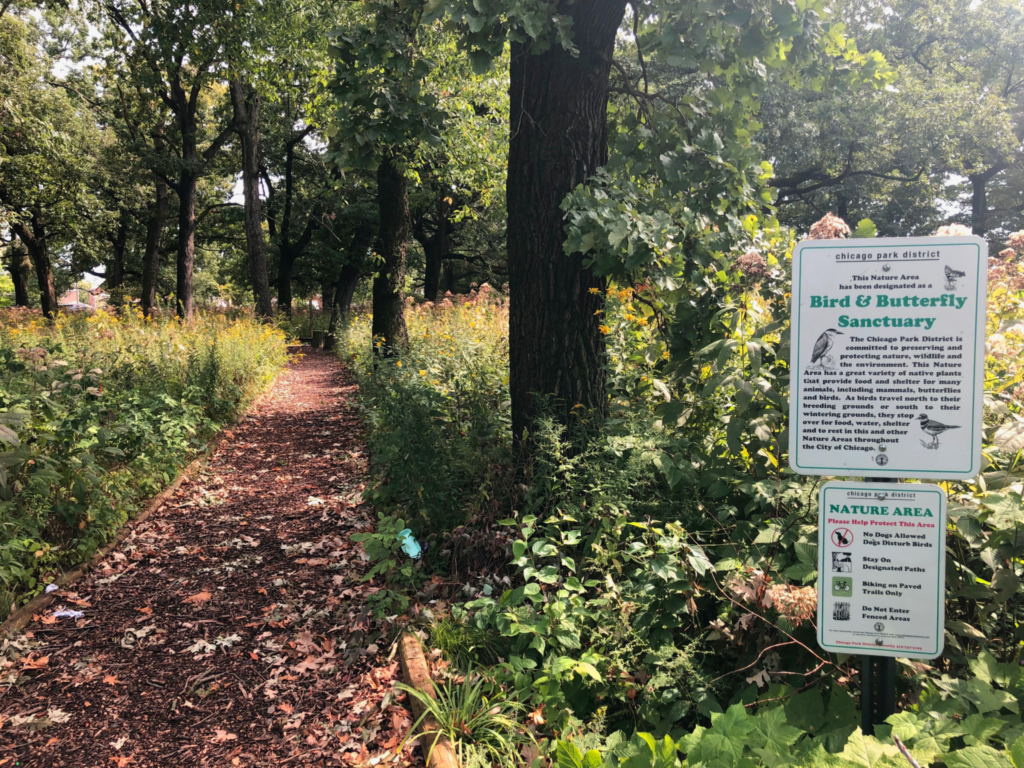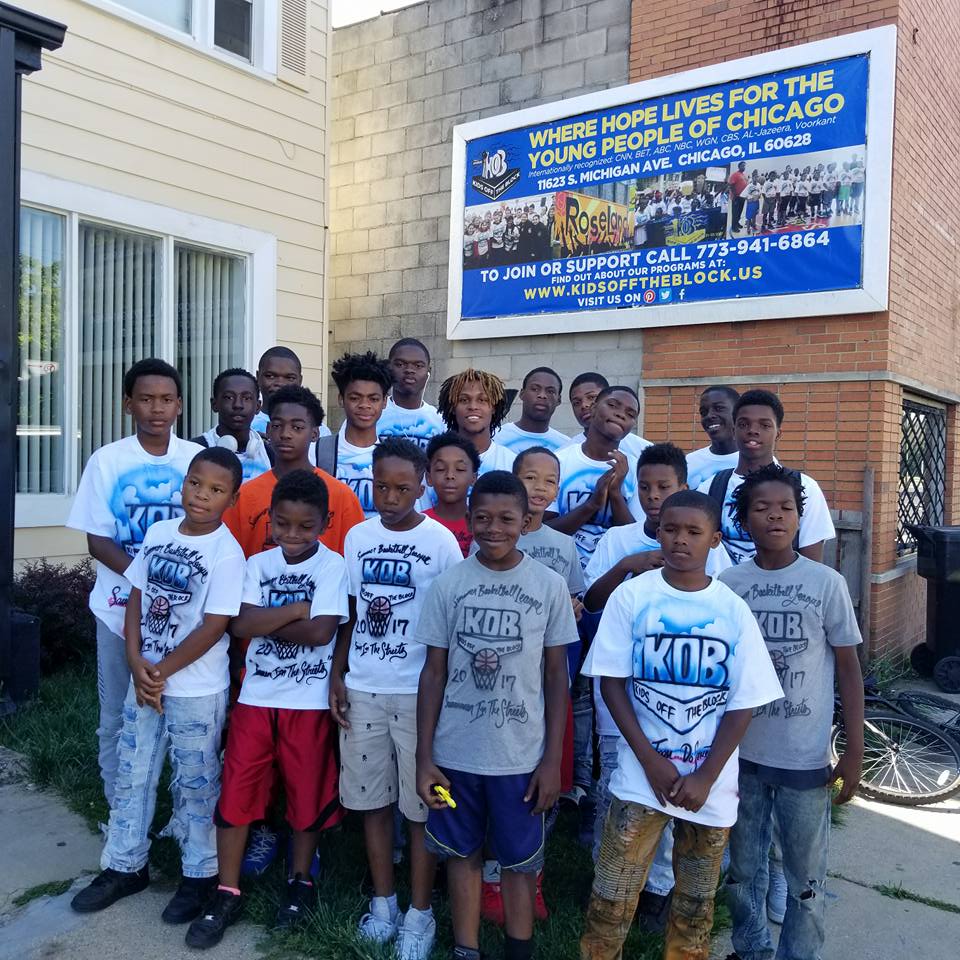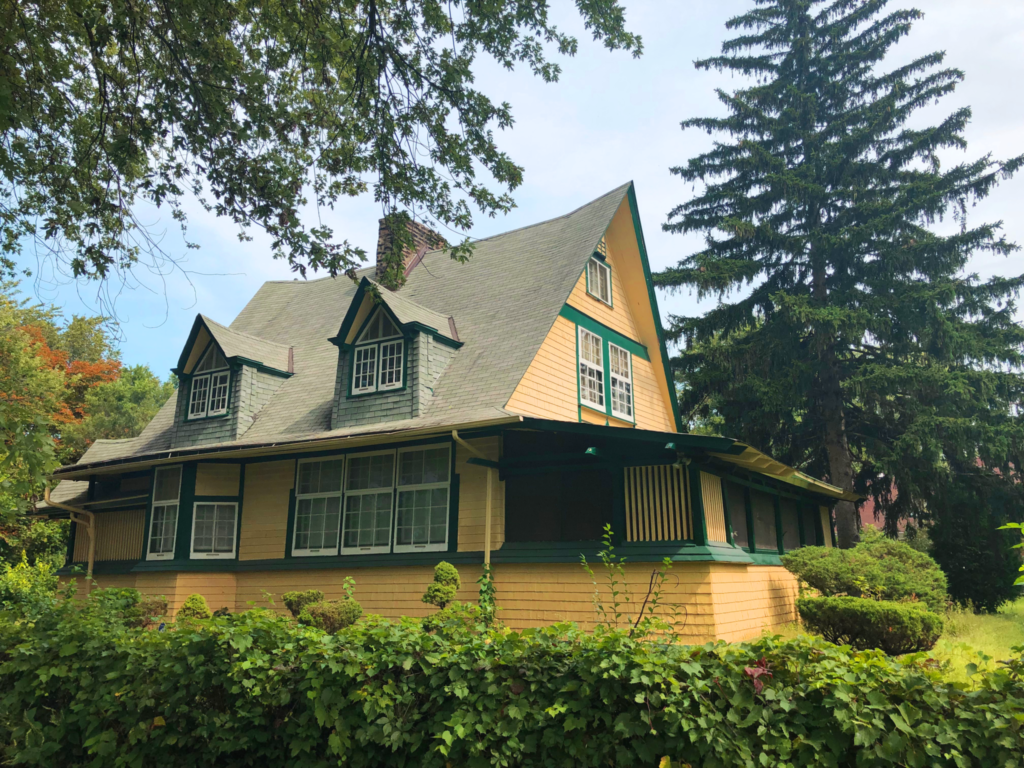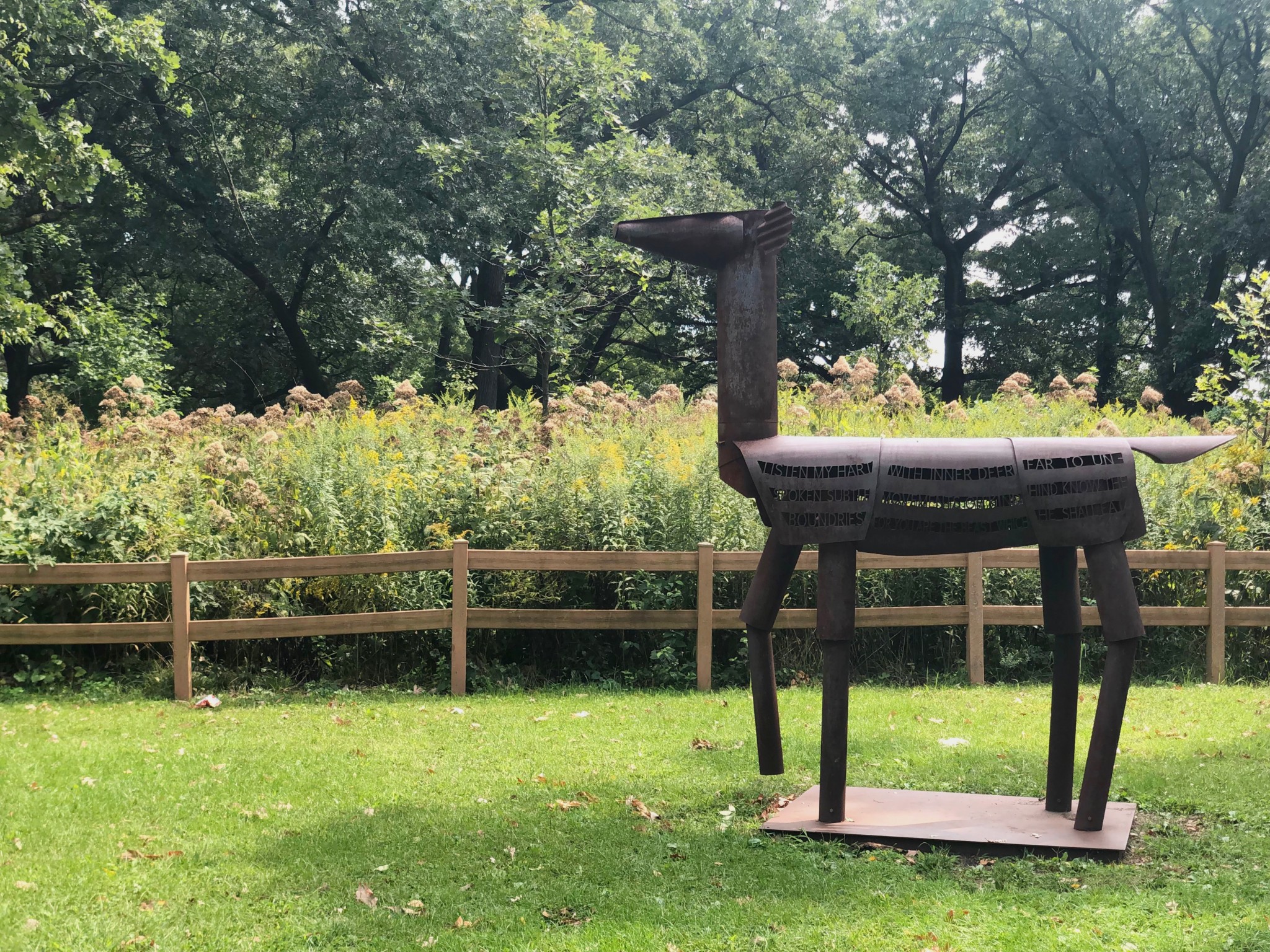- Best Place to Clear Your Mind: West Pullman Park
- Best Sanctuary: Kids Off the Block
- Best Spot for Pilot Training: Kickapoo Woods
- Best Chance to Buy a Frank Lloyd Wright House: S.A. Foster House and Stable
Monique Horton has lived in the West Pullman neighborhood for forty years. Her grandmother, Willie Mae Horton, has been a resident of West Pullman since 1970. They live together on 126th and Michigan, where the grandmother-granddaughter duo have been planning annual block club parties for almost thirty years. In order to secure the party’s date, the Hortons must first go to 9th Ward alderman Anthony Beale to acquire a permit. Then the pair must complete the permit for approval, fill out the application for the kids’ bouncy house, and get that seperate application approved as well. It is an arduous process, but the festival of music and laughter on the long-awaited summer day makes it well worth it.
When asked about her favorite part of living in the West Pullman neighborhood, Horton gave a soft smile. “By me growing up here, I know a lot of people, so, in forty years we became more of a friend-family type of thing.”
As a longtime resident of West Pullman myself, I would agree. Neighbors are more like siblings, and our annual block club party is just one of the many times we all celebrate our neighborhood together. To put it best in Monique Horton’s words: “This [neighborhood] is the best of all [neighborhoods].” (Jasmine Green)
Best Place to Clear Your Mind
West Pullman Park

I visited West Pullman Park with my father on a humid, cloudy August afternoon. As I walked towards the entrance, my eyes searched the field curiously. I was sure that I had never been to this park before, despite having lived in West Pullman my entire life. “Yes, you have,” countered my father. “Look over there.” His outstretched arm pointed to a small brick building stained by rain and faded graffiti. I stared at the humble structure, then remembered what was inside. The hot summer days of my childhood flooded back to me: weeks of swimming in the public pool, nylon swimsuit clinging to my wet skin, practicing underwater handstands with my neighborhood friends. I failed to remember, however, the charming park located beyond the area’s facilities.
What I noticed first about West Pullman Park were the sounds. Flocks of house sparrows chirped eagerly to each other, broadcasting pitched messages into the wind. Cicadas then joined the sparrows in an axis of noise. The bugs’ cacophonic cry swelled then descended into a low, roaring buzz. The concert of critters continued around me as I noticed the scenery. Large oak trees stretched upwards and cast a lush shade that covered the entire park. Their branches nipped at the corners of the sky, twisted beneath each other, like tangled vines in a jungle. I watched the world move from the seat of a park bench; I took a deep breath in and appreciated the patterns of nature.
Near the edge of the playground, there stood a brooding structure. It was a deer, made from rusted cylindrical metal, with words carved into its flank. The deer was facing towards an enclosed field of flowers, named the “West Pullman Park Butterfly Sanctuary.” As you enter the sanctuary through the gap in its wooden fence, you are first greeted by twitchy squirrels, racing up the leathery trunks of oak trees. Half-sawed logs clear a path, but goldenrod and Joe-Pye plants curtsy over their borders to welcome you. Your heels crunch the dry mulch as you walk deeper into the sanctuary’s maze. Honeybees sip nectar from the pistils of golden aster flowers. Birds glide in a crescent moment to rest atop leaves. The noises of the parkland behind you fade away slowly, and you are left alone with your thoughts.
Such is the beauty of West Pullman Park. Established in 1914 by the West Pullman Land Association, West Pullman Park is one of four public parks in the West Pullman neighborhood.
The park’s sixteen acres encompass an indoor pool, basketball courts, baseball fields, gymnasiums, a playground, an outdoor spray pool, and, of course, the enchanted greenery that connects it all. Quiet and serenely beautiful, West Pullman Park will allure you: so sit on a park bench, breathe in, and let your mind wander amidst the spellwork of nature. (Jasmine Green)
West Pullman Park, 401 W. 123rd St. Park open 7am–11pm everyday, fieldhouse 8am–8:30pm Monday–Friday, 10am–4:30pm Saturday, closed Sundays. (312) 747-7090. chicagoparkdistrict.com/parks-facilities/west-pullman-park
Best Sanctuary
Kids Off the Block

Kids Off the Block started off simply enough: Diane Latiker wanted to make sure her youngest of eight children, thirteen at the time, made it through high school and went to college. She started spending time with her daughter’s friends, and one day invited them to the house for a get-together. “As I listened to them, I thought I knew her friends, but I didn’t know anything,” she recounted. Kids her daughter’s age were being recruited into gangs and failing school. Realizing she could help, Latiker sold the family TV to gather enough resources to start helping some kids with their homework. Soon enough, kids were coming over for more than homework. “Eventually homeless kids started coming. At one point we had seventy-five kids in the house.”
Latiker would often get kids involved through sports and music. She recalled more than one kid would come over in order to play basketball and stay for the other things Latiker did, like mentorship and support. “Some of them needed help keeping the lights on in the house. There was a kid who would wear two to three hoodies in the wintertime, so we pulled together fifty or sixty dollars to buy him a coat,” she said. Sometimes that support was as simple as feeding them. “We were helping so they could focus on their education.”
At forty-six years old, Latiker quit her job and started going to meetings and researching on how to help the kids. She would stay at the alderman’s office so long they had to ask her to leave. At first, she couldn’t explain exactly what she was doing or why, either to herself or her family, who didn’t take to it. “My daughter would get mad,” Latiker recalled. “All her friends were in the house twenty-four hours a day, and she’d say, ‘Hey, I’m the baby, you’re my mom!’” Mothers from around the community would get upset with her when their kids came home and started saying “‘Well, Miss Diane told me I should do this’ and I would tell them, ‘No, don’t say that!’” she laughed. With so many kids milling about inside and outside the house, the neighbors would call the police. And with kids from at least six different gangs coexisting inside the house, two gang leaders came to threaten her. At one point, her van was shot up.
When I asked why she kept it up, she said simply, “I quit every day. When I found out that people in the community didn’t care about the kids and wanted them locked up…every day I woke up and said to myself, I’m done. We’ve lost young people to violence too, and it shreds your soul…that made me want to quit too.” After a pause, she added, “But then a kid would come in, saying how much it meant to be here, or how much it helped them…and I would remember why I did this.”
Eventually, Latiker began getting support, both from her family and outside sources. She partnered with Summer in the Streets, a “citywide collaborative to decrease violence among youth during Chicago’s summer months,” and has hosted ‘Feed a Teen’ every Thanksgiving for the past thirteen years, where she feeds over a hundred people, with kids she mentors bringing their family and friends. She was able to secure an office next door and used it for a few years, and plans to turn it into a technological entrepreneurship center, a place for kids to learn useful skills.
“There are still obstacles, even after sixteen years,” she added. During the budget crisis, state funding dried up. While she’s been able to gather enough money through fundraisers to buy the office building next door, the roof caved in three years ago, and she’s looking for funding for the rehab. Latiker had to move everything back into the house where we sat for the interview, in a large welcoming space that included the kitchen, dining and living rooms, and an open bowl filled with Tootsie Rolls on the table. The walls were covered with frames containing pictures of kids and what seemed like an endless collection of awards and honors dedicated to the work she’s done over the years.
Like always, what drives her forward is the kids. She told me about Denzel Russell, now a senior at Fenger High School who just turned eighteen in August, and who she got to know a few years back. “He came from violence. He’s a shy man, he loves his family. He’s not in a gang but surrounded by them,” she explained. She showed me a video of Russell reading a poem that he wrote for her, in which he went over all the ways in which she’s been there for him and helped him succeed, and that he loved her. “This is why I do it…we are a small part in their lives, but that small part has excelled when they come out here.” (Adam Przybyl)
Kids Off the Block, 11623 S. Michigan Ave. On November 23, 1pm–5pm, KOTB will be hosting ‘Feed a Teen’ across the street from the office. (773) 941-6864. kidsofftheblock.us
Best Spot for Pilot Training
Kickapoo Woods
Yes, technically Kickapoo Woods is in Riverdale the town, not the neighborhood of Chicago—but we don’t think that should disqualify what is objectively a great place to relax and partake in outdoor activities. As in most Cook County forest preserves, there are hiking and walking paths that meander through trees and prairies, and there’s an area for picnics, some of it with tree cover. Being next to the Little Calumet River, there’s a path that leads to a loading area for light canoeing down the river, which is beautifully shaded and isolated from everything else.
But what helps Kickapoo Woods stick out is what some might consider the main attraction: a small airfield for model airplanes, separated from the picnic area with a short fence and a couple signs that say “Flyers only beyond this point.” As one of nine official model airplane flying fields in the county, the Model Aviation Club organizes the Model Aviation Flight School in the summertime at Kickapoo, which is free for all Aviation Club members (though participants are asked to donate one gallon of glow fuel).
Whether they practice with one of the available planes or purchase their own, student pilots can learn radio and taxi basics, take-offs and landings with head and crosswinds, and more—before a final flight school exam. (Adam Przybyl)
Kickapoo Woods, Halsted St. south of W. 144th St., Riverdale, IL. Sunrise to sunset. fpdcc.com/places/locations/kickapoo-woods
Best Chance to Buy a Frank Lloyd Wright House
S.A. Foster House and Stable

Many houses designed by architecture superstar Frank Lloyd Wright sell for well over $1 million. The Heller House in Hyde Park, for instance, is currently listed at $2.2 million. But Chicago is also home to what is, according to the Frank Lloyd Wright Building Conservancy, the lowest-priced Wright house currently on the market: the S.A. Foster House and Stable in West Pullman, available for just $175,000.
The house is located at the intersection of 121st Street and Harvard Avenue, situated on a gorgeous quarter-acre lot lined by trees. One of the few surviving Wright buildings in the city, it bears little resemblance to his later projects. Wright designed the building in 1900, when he was in his early thirties and still experimenting with different architectural styles. As a result, the house lacks many of the elements, like strong horizontal lines, that characterize the Prairie School of architecture.
Instead, Wright drew on elements of Japanese architecture, still evident in features like the home’s gateway. The 1893 World’s Columbian Exposition featured an elaborate Japanese pavilion in Jackson Park, one of the first exhibitions of Japanese architecture in America. Wright, who worked on the fair’s Transportation Building, would have had the opportunity to observe the pavilion as it was constructed. Wright would later become an avid collector of Japanese prints, visiting Japan in 1905. These interests clearly influenced his architecture, nowhere more evidently than the Foster House. Otherwise a fairly conservative design, the roof is the most notable feature, which flairs out and curves up in a fashion similar to the Japanese irimoya roof. This feature is mirrored in the front gate, each post of which has a small roof that echoes the torii gates that mark the entrance to Shinto shrines.
The house was built as a summer cottage for Stephen A. Foster, a Municipal Court judge and the vice president of the West Pullman Land Association, which developed much of the neighborhood. At the time, the Stewart Ridge area was a rural section of the city dominated by open prairie, making the house a place where Foster and his wife Almeda could ride horses, relax on the sun porch, and escape the city’s hot summers.
Some of the house’s original features, including a functional fireplace in the living room, have remained intact through the decades. Most of the house, however, requires a bit of work. Real estate agent Armond Boulware told WBEZ in 2017 that the house is structurally sound, but probably needs $100,000 in cosmetic work. The original wood floors are still there, but have been covered by carpet, while the bathrooms and kitchens desperately need an update. The house has been designated a Chicago Landmark since 1996, which adds another layer of review for any permit applications. Despite these drawbacks, the house’s unique design—and its low price tag—offers the right owner an opportunity to own a piece of architectural history for a relatively reasonable price. (Sam Joyce)
S.A. Foster House and Stable, 12147 S. Harvard Ave. Private residence.

